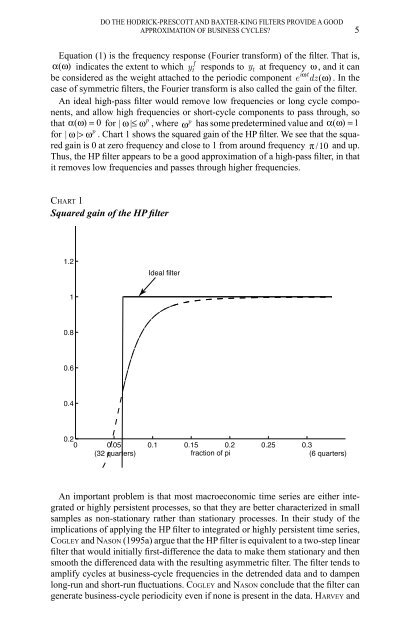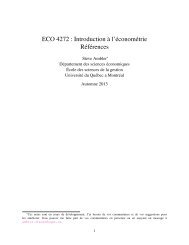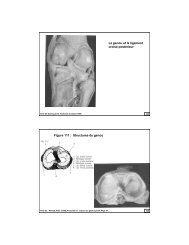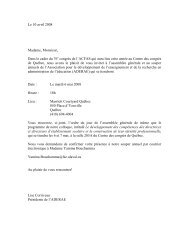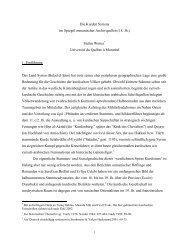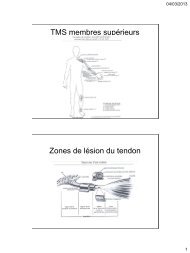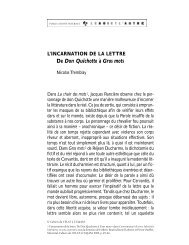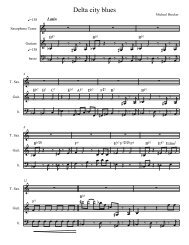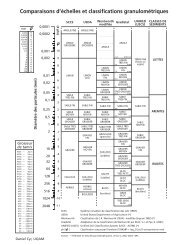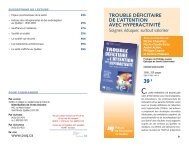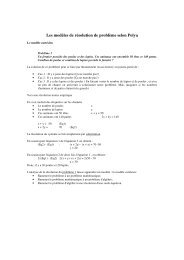Do the Hodrick-Prescott and Baxter-King Filters Provide a ... - UQAM
Do the Hodrick-Prescott and Baxter-King Filters Provide a ... - UQAM
Do the Hodrick-Prescott and Baxter-King Filters Provide a ... - UQAM
Create successful ePaper yourself
Turn your PDF publications into a flip-book with our unique Google optimized e-Paper software.
DO THE HODRICK-PRESCOTT AND BAXTER-KING FILTERS PROVIDE A GOOD<br />
APPROXIMATION OF BUSINESS CYCLES? 5<br />
Equation (1) is <strong>the</strong> frequency response (Fourier transform) of <strong>the</strong> filter. That is,<br />
f<br />
α( ω ) indicates <strong>the</strong> extent to which y t responds to y t at frequency ω , <strong>and</strong> it can<br />
iωt<br />
be considered as <strong>the</strong> weight attached to <strong>the</strong> periodic component e dz( ω ) . In <strong>the</strong><br />
case of symmetric filters, <strong>the</strong> Fourier transform is also called <strong>the</strong> gain of <strong>the</strong> filter.<br />
An ideal high-pass filter would remove low frequencies or long cycle components,<br />
<strong>and</strong> allow high frequencies or short-cycle components to pass through, so<br />
p<br />
that α( ω ) = 0 for | ω | ≤ ω , where<br />
p<br />
ω has some predetermined value <strong>and</strong> α( ω ) = 1<br />
p<br />
for | ω | > ω . Chart 1 shows <strong>the</strong> squared gain of <strong>the</strong> HP filter. We see that <strong>the</strong> squared<br />
gain is 0 at zero frequency <strong>and</strong> close to 1 from around frequency π /10 <strong>and</strong> up.<br />
Thus, <strong>the</strong> HP filter appears to be a good approximation of a high-pass filter, in that<br />
it removes low frequencies <strong>and</strong> passes through higher frequencies.<br />
CHART 1<br />
Squared gain of <strong>the</strong> HP filter<br />
1.2<br />
Ideal filter<br />
1<br />
0.8<br />
0.6<br />
0.4<br />
0.2<br />
0 0.05 0.1 0.15 0.2 0.25 0.3<br />
(32 quarters)<br />
fraction of pi<br />
(6 quarters)<br />
An important problem is that most macroeconomic time series are ei<strong>the</strong>r integrated<br />
or highly persistent processes, so that <strong>the</strong>y are better characterized in small<br />
samples as non-stationary ra<strong>the</strong>r than stationary processes. In <strong>the</strong>ir study of <strong>the</strong><br />
implications of applying <strong>the</strong> HP filter to integrated or highly persistent time series,<br />
COGLEY <strong>and</strong> NASON (1995a) argue that <strong>the</strong> HP filter is equivalent to a two-step linear<br />
filter that would initially first-difference <strong>the</strong> data to make <strong>the</strong>m stationary <strong>and</strong> <strong>the</strong>n<br />
smooth <strong>the</strong> differenced data with <strong>the</strong> resulting asymmetric filter. The filter tends to<br />
amplify cycles at business-cycle frequencies in <strong>the</strong> detrended data <strong>and</strong> to dampen<br />
long-run <strong>and</strong> short-run fluctuations. COGLEY <strong>and</strong> NASON conclude that <strong>the</strong> filter can<br />
generate business-cycle periodicity even if none is present in <strong>the</strong> data. HARVEY <strong>and</strong>


